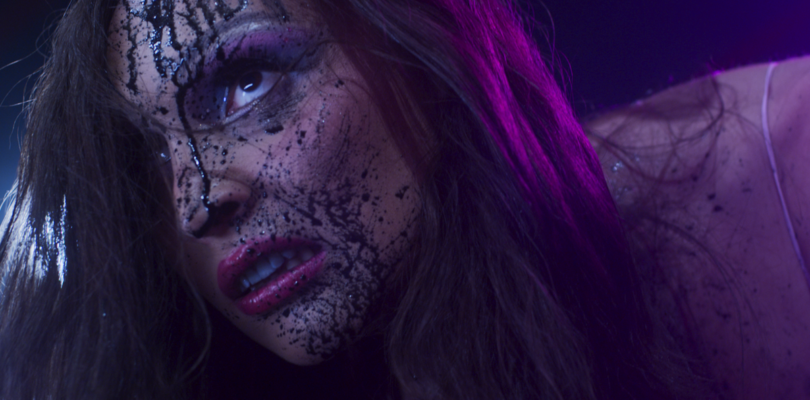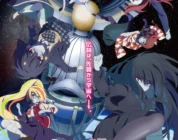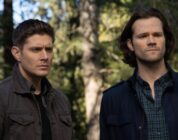Horror movies used to treat queerness as a secret to be buried or a perversion to be punished. But now, with a new generation of queer creators in charge, we’re holding the knife — or the axe, if you prefer. Queer horror centers queer bodies, queer friendships, queer rage. From Don Mancini’s ” Chucky,” a gay teen love story playing out amid murderous doll mayhem, to Alice Maio Mackay’s ”T Blockers,” in which parasitic masculinity meets trans resistance, a new genre is blooming. And it’s both beautiful and gruesome to behold.
As a longtime horror fan, I love seeing queer characters get their flowers — especially if they’re covered in the blood of TERFs. But I do wonder if we lose something when subtext becomes text. “This is the old man in me talking,” says Grant Sutton, a cultural critic whose work explores the intersection of queerness and horror, “but I miss having to go hunting for subtext.” Sutton says there was a certain insidery charm to decoding the old slashers.
Old school horror was one of the places that young queerdos (it me) learned how to be in the world, like a training guide for how to be queer and not die. “Horror taught you how to dim your light and how to pass in situations that are not safe,” Sutton says. Those are not the kind of lessons that anyone wants to have to learn from the culture they consume, but they were unfortunately necessary.
Horror also gave all us queerdos a very specific kind of schoolyard street cred. “I prided myself on being able to watch whatever horror movie anybody else could watch,” says Sutton. Watching slasher films, after all, is not for thin-skinned people. “And that made me feel tougher and brought me a small level of respect on the playground.”
I can relate. In the sixth grade, everyone on my bus called me “Dead Friend” (after the movie ”Dead Friend″) because I wore a lot of eyeliner and black T-shirts. Basically, I scared people. That may not sound like a win, but being intimidating feels a lot better than being bullied.
Unfortunately, old horror is also one of the ways that cis-hets learned to fear queers. Think about Buffalo Bill in ”Silence of the Lambs,” a character whose gender nonconformity was derided as deviance, not identity. Or Angela in ”Sleepaway Camp,” whose gender-bending twist ending was treated as a punchline and a horror reveal. In ”The Lost Boys,” the vampires ooze queer subtext, degrading the concept of chosen family. Even ”The Hunger,” for all its elegance, framed eternal queer love as cold and predatory.
“Horror films train people who are part of a heteronormative majority to persecute things they don’t identify with or understand,” Sutton says. In the old tradition, queer people were often cast as seducers, psychopaths, monsters — or all three at once. So as much as we may have learned some survival tips, we also learned that queerness will always be punished, and likely in a breathtakingly cruel way. This is evident from the closeted possession of ”Nightmare on Elm Street 2″ to the misunderstood hunger of “Jennifer’s Body.”
But horror made by queer creators casts us as far more than monsters. It also centers our truths. “We’re making these films from a really earnest place,” says Mackay, the trans horror director behind ”T Blockers″ and ”Satranic Panic,” films that became cult classics the moment they dropped. Queer horror, then, still teaches about queerness, but it does so with sincerity and experience instead of metaphor and stigma.
That sincerity is what makes Mackay’s films so powerful. She’s not dressing trauma porn as horror. Instead, she positions pain and violence in her work as a real thing that queer people deal with. “Sometimes we cover really bleak topics,” she says, “but when it’s being told from an authentic place … we have this kind of catharsis, and relief from the heavier grounded stuff.”
We can transform evils in the real world into actual on-screen monsters — as rotten on the outside as they are on the inside, Mackay says. In queer horror, the monsters are both metaphoric and real. In the 2022 slasher film ”They/Them,” for example, kids at a conversion camp are terrorized by a masked killer, transforming the horrifying reality of institutionalized queerphobia into literal horror. In ”T Blockers,” a parasitic alien conspiracy targets the queer community. Finally, all those invisible, structural forms of oppression and bigotry are being forced to show their monstrous forms.
In both of those particular films, the monsters are conversion narratives, homophobia and internalized transphobia. Making the status quo the monster is one of queer horror’s first departures from the traditional (read: homophobic) tropes of the genre. But new queer horror departs even further by both punishing the monster and also holding space for queer redemption.
“Enabling the characters to find allies and their own inner strengths … hopefully provides them with a sense of hope for a better world,” Mackay says. So instead of walking away from the theater depleted, queer audiences feel empowered. And they might even find justice in the form of revenge.
″Manhunt,” a gore-slicked dystopian novel by Gretchen Felker-Martin, gives readers the satisfaction of picking off the patriarchy one feral man-monster at a time. The story follows two trans women surviving a TERF-led apocalypse where a virus turns men into the undead. Chad-as-zombie is exactly the kind of delightful catharsis that cis-het horror has long denied us. “Horror lets you rehearse your own revenge without actually having to enact it,” Sutton says. Chad finally gets what’s coming to him, and you don’t even have to leave the couch.
But it’s not all about revenge. Some queer horror is just good campy fun, like the TV series ”Chucky.” “Chucky is so gay, so quippy, so wonderful,” says Sutton. The world of ”Chucky″ is canonically queer, totally fluid and centers around a found family. Yes, Chucky is totally a possessed murder doll, but he’s found his people, and that brings a lot of joy.
“We genuinely care about the characters and the stories we’re telling,” Mackay says of herself and her creative collaborators. “I really wanted this film to be an ode to friendships and platonic love … especially those between queer and trans people. That care is what makes new queer horror different.
Don’t get me wrong, this shit will still give you nightmares, but it will also give you hope.
rnrn”,”
rnrn”,”
rnrn”],”adCount”:0}}”>





